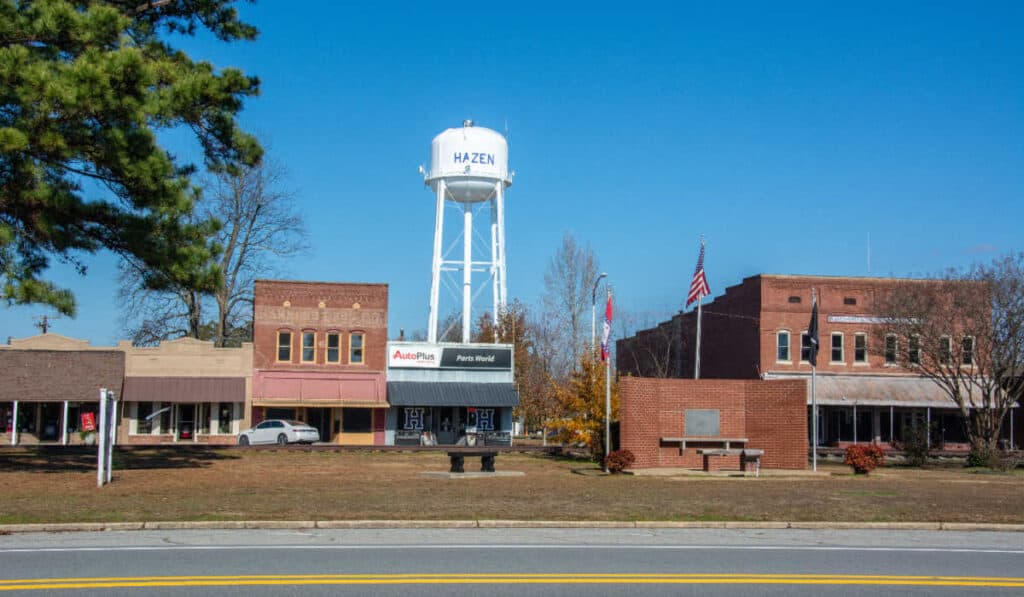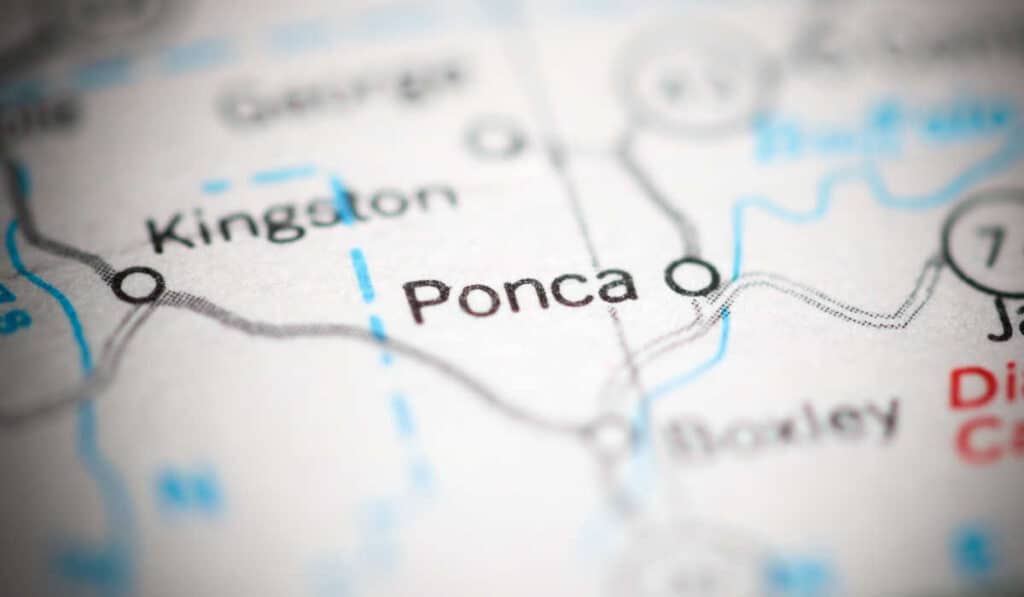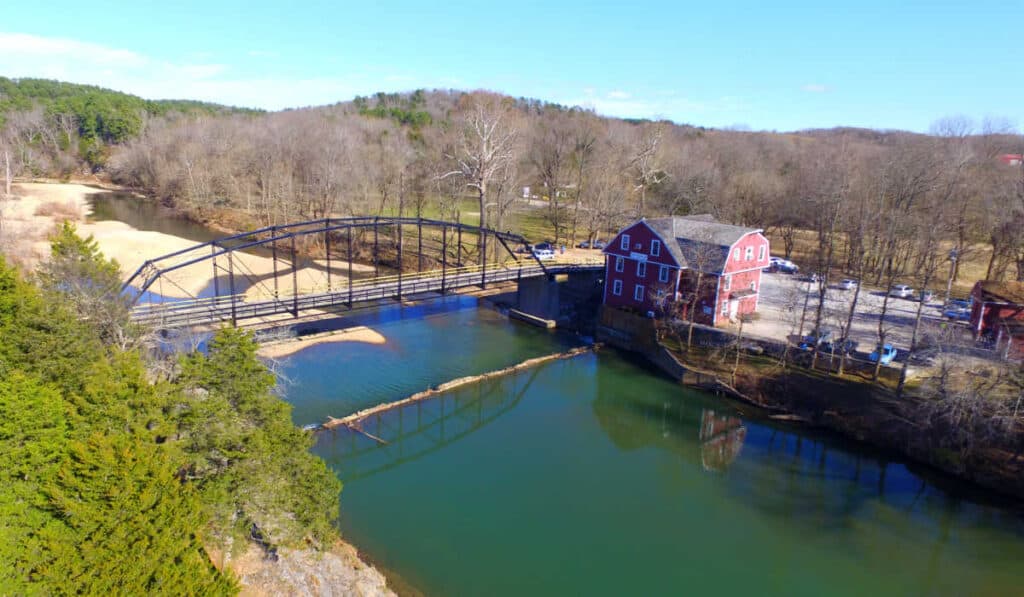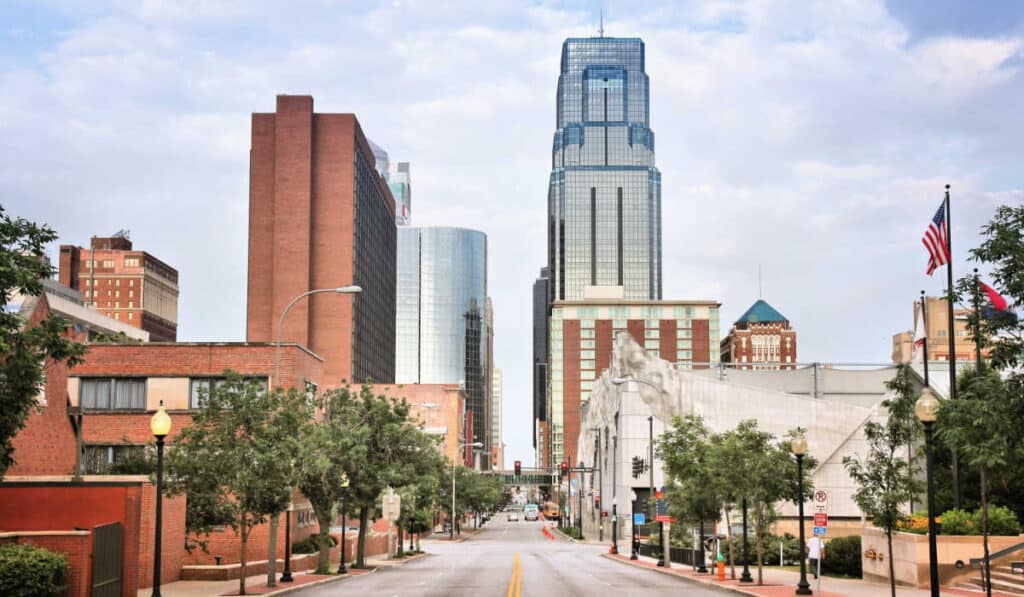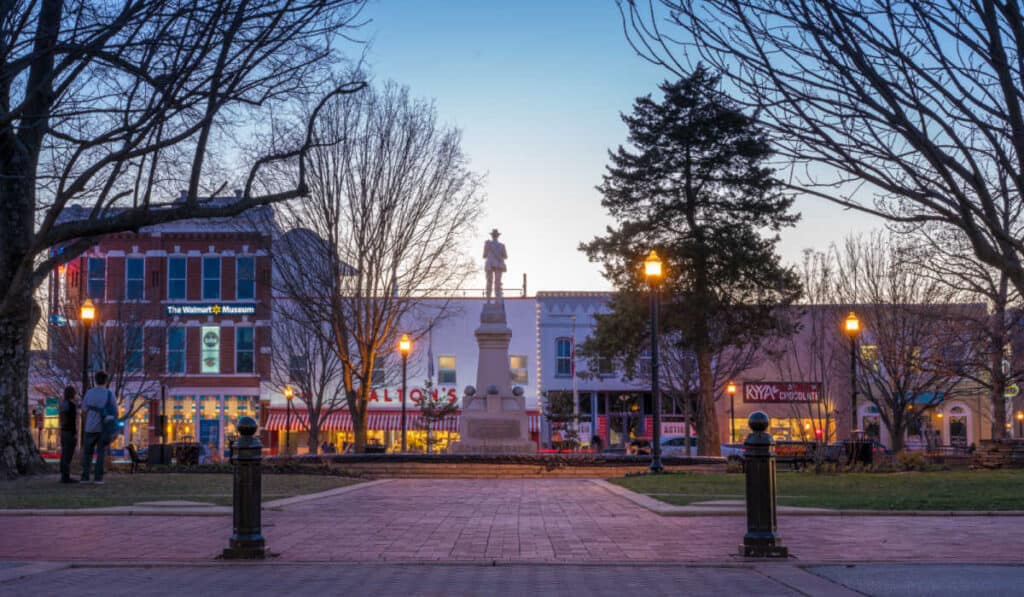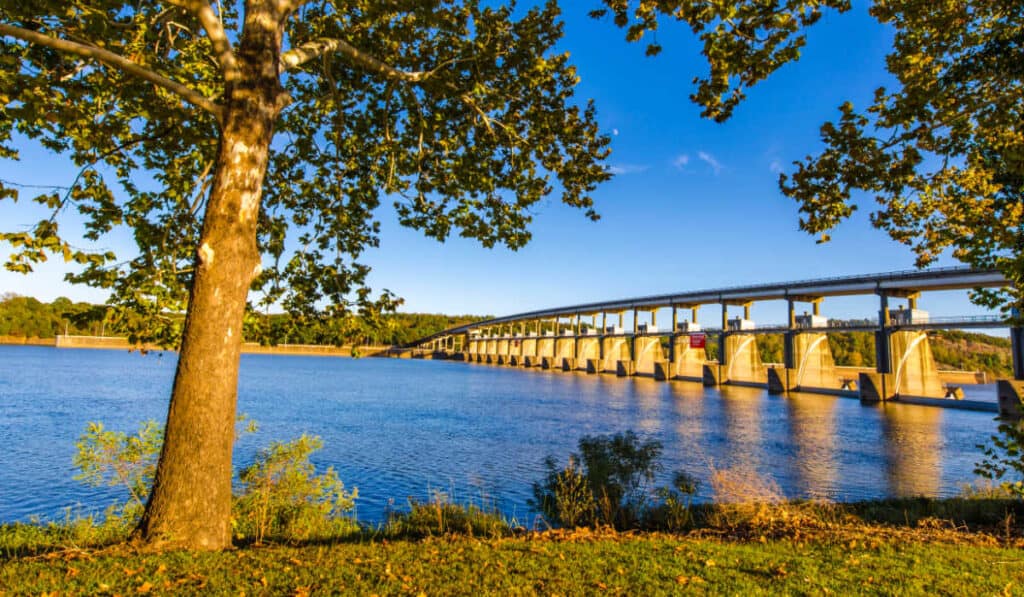Illinois, a state located in the Midwestern United States, is widely recognized for its rich history, diverse attractions, and unique culture. While many people think of Chicago when they hear the name Illinois, the state has much more to offer than just the Windy City. From its historic landmarks to its natural wonders and cuisine, Illinois has a plethora of reasons to be celebrated.
One element that sets Illinois apart is its strong connection to Indigenous American archaeological sites. For instance, the Cahokia Mounds hold the title as the largest indigenous archaeological site in North America, north of Mexico source. Another noteworthy aspect of this state is its role in political history, as it’s home to the capital city of Springfield and was the birthplace to several prominent American politicians.

In addition to its historical significance, Illinois boasts numerous attractions and experiences that reflect its vibrant culture. Within the bustling city of Chicago, visitors and residents alike can enjoy an array of entertainment options, exquisite dining, and beautiful natural scenery. Overall, Illinois is a remarkable state, known for a combination of historic sites and contemporary attractions that appeal to a wide range of interests.
History
Illinois, often referred to as the “Land of Lincoln” due to its association with the 16th President of the United States, Abraham Lincoln, has a rich and diverse history. The state was admitted to the Union on December 3, 1818, becoming the 21st state.

Before European exploration, Illinois was home to several Native American tribes. The first Europeans to visit the area were French explorers Louis Jolliet and Jacques Marquette in 1673. Following the French and Indian War, the region was ceded to Britain, then later became part of the United States after the American Revolution.
The early 19th century in Illinois was marked by significant development and population growth. The construction of the Illinois and Michigan Canal in the 1830s and 1840s helped spur economic growth by providing a crucial water link between the Great Lakes and the Mississippi River. This allowed the state to become an essential transportation hub in the Midwest.
During the Civil War, Illinois played a crucial role in the Union due to its strategic location, resources, and strong support for President Lincoln. The state contributed over 250,000 soldiers to the Union Army, with many regiments experiencing high casualties and achieving great heroism on the battlefields.
The abolition of slavery was a significant issue in Illinois, demonstrating a divide between the northern and southern parts of the state. However, with strong leaders like Abraham Lincoln, Illinois became a major force in the fight against slavery and the eventual abolition of the institution.
In the years following the Civil War, Illinois continued to grow and prosper. The population increased, cities like Chicago became vital centers of industry and culture, and a strong tradition of agriculture formed a crucial part of the state’s identity. Today, Illinois serves as a reminder of the rich history and diverse contributions that have shaped its legacy and the nation as a whole.
Geography
Illinois is a state in the Midwestern United States, known for its diverse geography and rich cultural history. The state is bordered by Wisconsin to the north, Iowa to the northwest, Missouri to the southwest, Kentucky to the south, Indiana to the east, and shares a water border with Michigan in Lake Michigan to the northeast. Illinois encompasses a diverse range of natural features, from the rolling prairies that characterize much of the landscape to the bustling city of Chicago, one of the most important urban centers in the country.

Lake Michigan is one of the Great Lakes and forms part of the eastern border of Illinois, while the mighty Mississippi River flows along the state’s western border. The Ohio River runs along the southern boundary, creating a natural dividing line between Illinois and Kentucky. In addition to these major water bodies, several other rivers and lakes can be found throughout the state, contributing to its abundant water resources.
At the heart of the state lies Springfield, the capital of Illinois and a significant historical and cultural center. Chicago, the largest city in the state, is located along the shores of Lake Michigan and is recognized for its impressive skyline, thriving art scene and world-renowned architecture.
The geography of Illinois can be divided into three distinct regions: Northern, Central, and Southern Illinois. Northern Illinois is dominated by Chicago and its metropolitan area, also known as Chicagoland. This region is characterized by its dense urban environment, surrounded by expansive suburban development.
Central Illinois is primarily made up of agricultural land with a mix of smaller cities and towns, with Springfield serving as the region’s focal point. Often referred to as the Prairie State, much of the Central Illinois landscape is defined by vast stretches of fertile farmland and gently rolling hills, with some areas giving way to expansive prairies.
Southern Illinois, also known as “Little Egypt,” offers a more rugged terrain, featuring the Shawnee National Forest and many scenic state parks. The region is known for its diverse ecosystems, characterized by extensive forests, wetlands, and numerous caves, making it a popular destination for outdoor enthusiasts.
In conclusion, Illinois’s rich geographical and cultural diversity make it an interesting and dynamic state to explore. With its mix of urban environments, agricultural landscapes, vast prairies, and natural wonders, there is something for everyone to discover and enjoy in the Prairie State.
Demographics and Culture
Illinois has a population of around 12.8 million people, with a significant portion residing in the Chicago metropolitan area. The state is diverse in terms of race and ethnicity, with approximately 63% identifying as White, 15% as Black or African American, 5% as Asian, and the remaining identifying with other racial or ethnic groups.
Illinois is the birthplace of several prominent figures in American history, including Barack Obama, Ulysses S. Grant, and Ronald Reagan. The state has a rich tradition of producing influential individuals in various fields such as literature, politics, and entertainment. Many famous people have called Illinois home, contributing to its cultural legacy.
The state of Illinois has a vibrant cultural scene, with its cultural life heavily influenced by the city of Chicago. It has a rich literary history, dating back to the 1910s and ’20s, with several renowned authors and poets hailing from the state. Today, numerous public and private institutional libraries throughout Illinois hold vast historical and literary collections.
Additionally, Illinois has numerous museums and cultural institutions that serve to preserve its history and showcase the arts. These museums highlight various aspects of the state’s past, its indigenous cultures, and its contributions to the nation. The state is also home to many exceptional cultural events, including popular festivals and fairs held throughout the year, celebrating music, theater, and other artistic disciplines.
Illinois is known for its presidents and their impact on American history. In fact, the state is often referred to as the “Land of Lincoln,” honoring its ties to the nation’s 16th president, Abraham Lincoln. Both Ulysses S. Grant and Barack Obama also have strong connections to Illinois, further cementing its reputation as a breeding ground for political leaders.
The state boasts several professional sports teams, including popular franchises such as the Chicago Bears (NFL), Chicago Cubs (MLB), Chicago White Sox (MLB), and the Chicago Blackhawks (NHL). These teams have enthusiastic fan bases and have contributed significantly to the overall sports culture in Illinois. In addition, collegiate sports teams from various universities across the state compete in a wide range of athletic disciplines, further enhancing the sports landscape of Illinois.
Economy and Industry

Illinois, often known as the Prairie State, has a diverse economy with a variety of industries contributing to its growth and development. One of the most significant sectors of the state’s economy is agriculture. With approximately 75,000 farms spread across 76% of the state’s total land area, Illinois has a rich agricultural heritage. The state’s farmland is largely located within the North American Corn Belt, making it a leader in the production of corn and soybeans. In addition to these large-field crops, Illinois farms raise hogs, beef cattle, and dairy products. With its prowess in agriculture, Illinois also plays a crucial role in the biofuel industry, focusing on ethanol and soybean-based biodiesel production.
Another important aspect of Illinois’ economy is its nuclear power industry. The state is home to several nuclear reactors, which help meet its increasing energy demands. By employing several nuclear power plants throughout the state, it is one of the largest nuclear energy producers in the United States.
Furthermore, Illinois’ central location in North America makes it a vital hub for transportation and trade. With a well-developed infrastructure, including major highways, railways, and waterways, the state supports a thriving shipping industry crucial to the movement of goods across the country. This has also attracted numerous Fortune 500 companies, contributing to its fifth-highest GDP in the nation.
Food and Cuisine
Illinois is known for its diverse and iconic food offerings, boasting a rich culinary history that represents the state’s culture. Popular dishes like deep-dish pizza and horseshoe sandwich hold a special place in the hearts of locals and tourists alike. The food scene in this state showcases the fusion of various traditions and palates, creating unique and memorable dining experiences.
One of the most famous dishes from Illinois is the deep-dish pizza, which traces its origins back to Chicago. This hearty and delicious pizza comes with a thick crust, generous layers of toppings, and gooey cheese, making it the perfect comfort food. It’s not uncommon for a deep-dish pizza to be loaded with sausage, mushrooms, onions, and green peppers, creating a symphony of flavors that truly represents the spirit of Illinois.
The horseshoe sandwich, a signature dish from Springfield, is another popular food item. This open-faced sandwich consists of toasted bread topped with meat (usually hamburger or ham), followed by a generous portion of crispy French fries, and smothered in a gooey cheese sauce. The combination of flavors and textures in a horseshoe sandwich will keep you coming back for more, making it a must-try dish when visiting the state.
Illinois is also known for being a major producer of pumpkin. In fact, the state produces more pumpkins than any other in the United States. This fact is celebrated with various pumpkin-inspired dishes, especially during the fall season. You can find pumpkin pie, pumpkin bread, and even pumpkin lattes in local cafes and restaurants.
The cuisine in Illinois is a true reflection of its blend between Midwestern friendliness and metropolitan sophistication. From tried-and-true classics like deep-dish pizza to inventive dishes like the horseshoe sandwich, the state offers a diverse array of flavors, textures, and ingredients that satisfy every palate. Combine traditional and innovative culinary approaches, Illinois is renowned for food that brings people together, creating unforgettable experiences that celebrate its unique culture.
Sports and Recreation

Illinoisans are passionate about their sports and there is no shortage of excitement when it comes to both professional and college athletics in the state. Covering a variety of sports such as football, basketball, baseball, and even ice hockey, Illinois offers sports enthusiasts an opportunity to get behind their favorite teams.
Major professional sports teams in Illinois are primarily centered around the city of Chicago. The NFL’s Chicago Bears are known for their devoted fan base, while the Chicago Bulls hold a legendary status in the NBA, largely thanks to the Michael Jordan era in the 1990s. Baseball fans can root for either the Chicago Cubs or the Chicago White Sox, both of which have a rich history and current competitive presence in Major League Baseball.
Ice hockey has a stronghold in Illinois as well with the Chicago Blackhawks, an NHL team, garnering a loyal following. Additionally, there’s also the Chicago Sky, which represents the city in the Women’s NBA, and the Chicago Fire, who participate in Major League Soccer.
Sports are not limited to the professional leagues in Illinois; the state is also home to many colleges and universities with strong athletic programs. The University of Illinois is a prime example of this, boasting exceptional teams across a range of sports, including football, basketball, and baseball. Other colleges such as Northwestern University, Loyola University, and Southern Illinois University also contribute to Illinois’ fervent sports culture.
While Chicago is the focal point for professional sports in the state, cities like Peoria also have noteworthy sports scenes, featuring minor league baseball teams such as the Peoria Chiefs. These smaller markets give fans the opportunity to enjoy live sporting events on a more intimate level.
In conclusion, Illinois’ vibrant sports landscape caters to a variety of interests, offering fans the chance to support an array of teams and attend exciting games throughout the year.
Tourist Attractions and Landmarks
Illinois is known for its diverse range of tourist attractions and landmarks, including iconic buildings, natural wonders, and historical sites. The state is home to the bustling city of Chicago, which boasts a stunning skyline featuring numerous skyscrapers such as the Willis Tower (formerly called the Sears Tower).
One of the popular attractions in Chicago is the Navy Pier, a lively waterfront destination that offers entertainment, dining, and shopping opportunities. The pier hosts various festivals and events throughout the year, attracting tourists and locals alike.
In the realm of museums, the Museum of Science and Industry is a must-visit destination. It is one of the largest science museums in the world and offers interactive exhibits that cover a wide range of scientific and technological subjects.
Outside of Chicago, Illinois is known for being the Land of Lincoln, with numerous historical sites related to the 16th President of the United States. Additionally, the town of Metropolis, Illinois, pays homage to another iconic figure, Superman, with a dedicated museum and a giant statue in the town square.

For a quirky and unique landmark, the largest catsup bottle in the world is situated in Collinsville, Illinois. This 170-foot tall water tower, shaped like a catsup bottle, has become a roadside attraction and draws curious tourists from far and wide.
Overall, Illinois offers a rich and varied array of landmarks and attractions that cater to different interests. Whether you are a history buff, a nature lover, or a fan of superheroes, you are sure to find something memorable during your visit to the state.
Unique Features
Illinois, the Land of Lincoln, is a state renowned for its blend of historical significance, modern technology, and natural beauty. The state boasts a variety of features that have both national and global recognition.
As a hub of technology and science, the University of Illinois has made significant contributions to the world of literature, blues music, and technology. The state is also the birthplace of the famous Route 66, which stretches from Chicago to Santa Monica, California, serving as an iconic symbol of America’s love for automobiles and road trips.
Geographically, Illinois is characterized by its plains, and it is the 6th most populous state in the United States. Often referred to as the Windy City, Chicago is a global city known for its stunning skyline, historic landmarks, and thriving arts scene. The city’s famous Navy Pier on Lake Michigan offers tourists and residents a range of attractions, including amusement rides, museums, and parks.
Illinois’ infrastructure includes an extensive train system, making it a significant hub for freight transportation in the United States. The state’s impressive history of train innovation extends back to its role in the development of the nation’s rail system.
Agriculture also plays an important role in Illinois, which is the 21st state to join the union. The town of Morton is known as the canned pumpkin capital of the world, putting Illinois on the map for pumpkin production. Additionally, the state is a major producer of corn and soybeans due to its fertile plains.
Finally, the state is home to quirky attractions such as the world’s largest catsup bottle in Collinsville, which stands as a testament to the unique charm that defines Illinois.
From its significant historical and cultural influences to its unique natural landscapes and agricultural prowess, Illinois is certainly a state with a wide array of fascinating features.
Politics and Corruption
Illinois is known for its rich political history and, unfortunately, a long-standing relationship with corruption. The state capital, Springfield, has been at the center of many political events, giving rise to both achievements and scandals.
The Land of Lincoln holds great significance in American politics, as it was the home of the 16th President, Abraham Lincoln. His political career began in the state legislature and later led him to the White House, where he made significant contributions to the nation before his assassination.
However, Illinois is also known for its corruption issues, ranking as the second-most corrupt state in the nation. This notoriety costs the state economy more than $550 million per year. One prime example of corruption in Illinois is the city of Chicago, which has consistently been ranked as the most corrupt city in the United States. These corruption issues range from conflicts of interest, bribery, and abuse of power by public officials.
Some of the notable instances of corruption in recent history involve famous politicians from Illinois. One such case includes the conviction of former Governor Rod Blagojevich for attempting to sell President Barack Obama’s Senate seat. Alongside Blagojevich, four out of the last seven governors in Illinois have been convicted of federal crimes related to corruption.
While the state is bordered by powerful political and economic actors such as Wisconsin, Indiana, and Missouri, the gravity of corruption issues has played a role in diminishing Illinois’ regional strength.
In an attempt to restore public trust and combat corruption, the state has taken various measures. For example, the city of Joliet established an anti-corruption task force to investigate local officials and politicians and ensure that the city maintains ethical standards. Similar efforts have been made throughout the state.
In conclusion, Illinois’ political landscape is a mixture of historical significance and challenges related to corruption. As the citizens strive for change and advocate for ethical governance, the hope is that Illinois can establish a reputation rooted in transparency and democracy.


